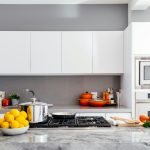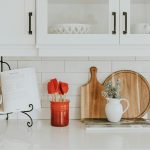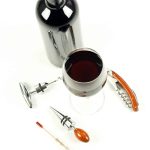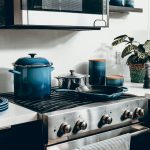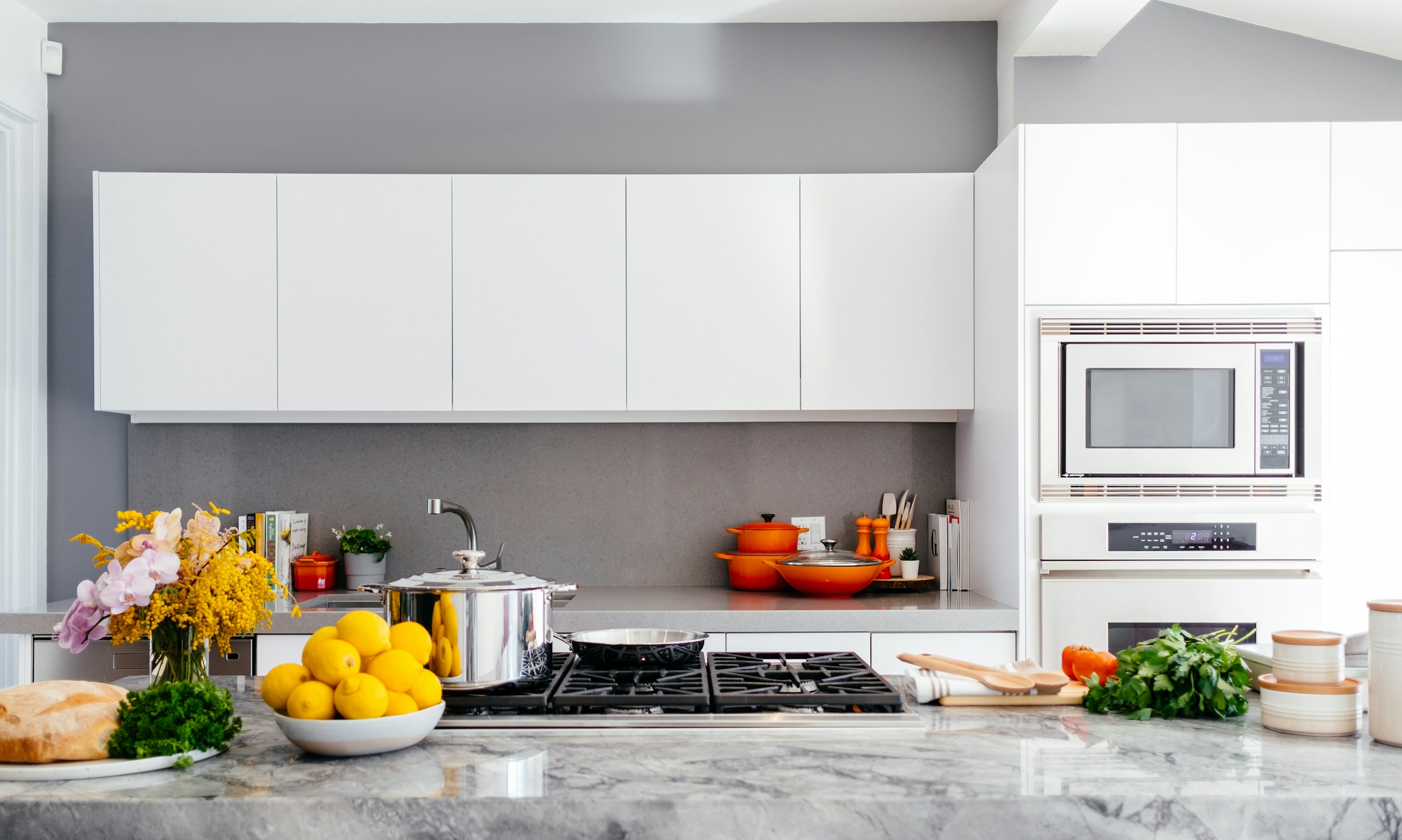Top Soundproofing Techniques to Silence Your Noisy Kitchen Appliances
If you’re tired of the constant hum, clang, and rumble of your kitchen appliances disrupting your peaceful home, it’s time to explore some effective soundproofing techniques. In this article, we’ll delve into the best methods to reduce noise from your kitchen appliances, making your home a quieter and more comfortable space.
Understanding the Sources of Noise
Before we dive into the soundproofing techniques, it’s essential to understand where the noise is coming from. Kitchen appliances like dishwashers, washing machines, and HVAC systems can generate various types of noise:
Also read : Top Techniques for Maximizing Spice Shelf Life in Your UK Kitchen
- Airborne Noise: This type of noise travels through the air and can be generated by the operational sounds of appliances.
- Impact Noise: This noise is caused by vibrations and movements, such as the spinning of a washing machine or the clanging of dishes in a dishwasher.
- Structural Noise: This noise is transmitted through the building structure itself, such as the vibrations from an appliance that travel through the floor or walls.
Soundproofing Your Dishwasher
The dishwasher is one of the noisiest kitchen appliances, but there are several ways to reduce its noise significantly.
Preparing for Soundproofing
To soundproof your dishwasher effectively, you need to prepare it properly. Here are the steps:
In parallel : Top Sink Options for the Ultimate UK Kitchen: Durability Meets Style
- Shut Off Power and Water: Ensure the dishwasher is disconnected from both power and water supply to avoid any accidents during the process.
- Remove Existing Soundproofing: Take out any existing soundproofing materials that might be in place.
- Access the Exterior: Pull the dishwasher away from the surrounding cabinetry to access its exterior surfaces.
Adding Rubberized Coating
One of the most effective techniques is to apply a rubberized or elastomeric coating to the exterior surfaces of the dishwasher.
- Measure and Cut: Measure the dimensions of the dishwasher and cut the rubberized sheeting accordingly.
- Apply the Coating: Peel back the adhesive backing and apply the coating, ensuring it is firmly pressed onto the surface. Use a roller tool to smooth out any air bubbles.
Adding Sound-Deadening Panels
In addition to the rubberized coating, you can add sound-deadening panels to address lateral sound transmission.
- Measure and Cut Panels: Measure the exterior dimensions and cut panels from sound-absorbing materials.
- Adhere the Panels: Use high-quality packing tape or aluminum duct tape to firmly adhere the panels to the sides and rear of the dishwasher.
Using a Rubber Mat
To reduce mechanical noise from the dishwasher vibrating on the floor, use a rubber mat.
- Measure and Cut the Mat: Measure the width and depth of the dishwasher cabinet cutout and purchase a rubber mat that fits.
- Lay the Mat: Place the rubber mat in the cabinet opening before sliding the dishwasher back into place. This helps isolate the appliance from the floor, reducing vibration noise.
Soundproofing Your Washing Machine
Washing machines can be another significant source of noise in your kitchen. Here are some techniques to reduce their noise:
Balance and Leveling
Ensure your washing machine is properly balanced and leveled. An unbalanced machine can cause more vibration and noise.
Anti-Drumming Solutions
Use anti-drumming solutions like anti-vibration pads or mats under the washing machine to reduce the impact noise.
- Anti-Vibration Pads: These pads absorb the vibrations of the washing machine, reducing the noise that travels through the floor and walls.
- Rubber Mats: Similar to the dishwasher, a thick rubber mat can help isolate the washing machine from the floor, reducing mechanical noise.
Soundproofing Your HVAC System
HVAC systems can also be a source of significant noise, especially if they are not properly insulated.
Acoustic Insulation
Use acoustic insulation around all ductwork running to and from the HVAC unit.
- Fiberglass and Noise Attenuation Insulation: Wrap ducts with fiberglass or noise attenuation insulation to add mass and density, limiting noise passage.
Vibration Isolation
Use vibration isolation mounts to reduce the transmission of vibrations from the HVAC unit to the building structure.
- Professional Sealing: Ensure all air gaps around the HVAC unit and ductwork are sealed professionally to prevent noise leakage.
General Soundproofing Techniques for Your Kitchen
In addition to appliance-specific soundproofing, there are several general techniques that can help reduce noise in your kitchen.
Sealing Gaps and Cracks
Sealing gaps and cracks around doors, windows, and walls is crucial for reducing noise.
- Weatherstripping: Apply weatherstripping around doorframes and windows to block noise from outside and shared hallways.
- Door Sweeps: Install a door sweep on your kitchen door to reduce noise coming from the hallway or other rooms.
- Acoustic Caulk: Use acoustic or silicone caulk to fill gaps around windows, walls, and baseboards.
Adding Insulation and Soundproofing Materials
Using the right insulation and soundproofing materials can significantly reduce noise.
- Acoustic Foam Panels: These panels absorb sound waves and reduce echo, making them ideal for kitchens with hard surfaces.
- Fiberglass Insulation: This type of insulation is effective at absorbing sound and can be used in walls and ceilings to reduce noise transmission.
- Mass-Loaded Vinyl (MLV): Adding MLV to walls and ceilings can significantly reduce noise transmission due to its high mass and density.
Using Acoustic Treatments
Acoustic treatments can help modify the acoustics of your kitchen to reduce noise and improve sound quality.
Acoustic Panels and Baffles
- Acoustic Panels: Install acoustic panels on walls or ceilings to absorb sound waves, reducing echo and reverberation.
- Baffles and Clouds: Hang baffles and clouds from the ceiling to absorb sound and reduce noise levels in open spaces.
Heavy Curtains and Window Treatments
Windows can be a significant source of noise leakage. Using the right window treatments can help.
- Heavy-Duty Curtains: Invest in thick, soundproof curtains designed to absorb sound waves. These curtains can also reduce echo within your kitchen.
- Thermal Curtains: Thermal curtains, with their thick, multi-layered design, can offer some noise reduction while controlling temperature.
Practical Insights and Actionable Advice
Here are some practical tips to help you get started with soundproofing your kitchen:
Choose the Right Materials
When selecting soundproofing materials, consider the type of noise you are trying to reduce. For example:
- Soft Materials: Soft materials like foam rubber, cork, and dense polyester fiber are excellent for absorbing sound waves.
- Dense Materials: Dense materials like mass-loaded vinyl and acoustic caulk are better at blocking sound transmission.
DIY vs Professional
While many soundproofing techniques can be done DIY, some may require professional help, especially when dealing with structural changes or complex installations.
Budget Considerations
Soundproofing can range from inexpensive DIY solutions to more costly professional installations. Here’s a rough estimate of costs for different materials:
| Material | Cost Range | Effectiveness |
|---|---|---|
| Weatherstripping | $5-$20 | High |
| Acoustic Caulk | $10-$30 | High |
| Acoustic Foam Panels | $20-$100 | Very High |
| Mass-Loaded Vinyl (MLV) | $50-$200 | Very High |
| Heavy-Duty Curtains | $30-$100 | Medium to High |
| Anti-Vibration Pads | $20-$50 | Medium |
Soundproofing your kitchen appliances and the kitchen itself is a feasible and rewarding project that can significantly improve the comfort and quietness of your home. By understanding the sources of noise, using the right materials, and applying effective techniques, you can create a much quieter kitchen.
As John, a homeowner who recently soundproofed his kitchen, puts it: "The difference is night and day. I can finally enjoy a quiet cup of coffee in the morning without the constant hum of the dishwasher or washing machine."
Remember, soundproofing is not just about reducing noise; it’s about creating a more peaceful and enjoyable living space. So, take the first step today and start making your kitchen a quieter, more comfortable place to be.





